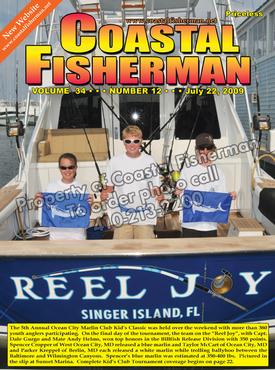


Article by Pat Schrawder
 EPIRB & GPIRB POSITION INDICATING RADIO BEACONS AND MORE!
EPIRB & GPIRB POSITION INDICATING RADIO BEACONS AND MORE!
Hopefully you’ve never experienced a day offshore when you had to abandon your boat or you were “dead in the water” with no one else in sight. If you have, then you know how bad that can feel. There are a few things that can be a great help if you ever find yourself in that situation.
The survival raft has been around for quite a while but more recent years have given us the device known generally as the Position Indicating Radio Beacon. Earlier models depended on overhead aircraft for relaying information about a vessel in distress. Today’s units make use of satellites.
The EPIRB (Emergency Position Indicating Radio Beacon) is a portable device containing a high power, five-year shelf life battery that, when activated, provides a distress signal via radio waves which helps rescue personnel locate your position. Each EPIRB has a unique electronic serial number that is transmitted by the unit. For the system to work as designed, it is critical that you send in your registration form to NOAA. This registration identifies the owner, the vessel and the unique serial number of the EPIRB. It also notifies NOAA of those persons you identify as the ones to contact first if your vessel is reporting a distress signal. In addition, you need to update your registration information periodically. This can quickly be done via the Internet at the Coast Guard website http://www.sarsat.noaa.gov/beacon.html.
The signal from the 406 MHZ EPIRB is received by satellites and transmitted to Local Use Terminals on land that decipher the code and match it to the database of names that have been registered. That data is relayed to a Mission Control Center and a Rescue Coordination Center is contacted. Local Search and Rescue forces are alerted and rescue craft are dispatched to the emergency site. A high intensity xenon strobe light on the unit and a 121.5 MHz radio transmitter aid in the short-range stages of location. This all happens very quickly.
Similar to the EPIRB is a device called the GPIRB (Global Position Indicating Radio Beacon). It is very close in design and purpose to the EPIRB except that it is able to give more precise location information. This is accomplished by the addition of a GPS receiver inside the device. When activated, its internal GPS finds its own position, just like an onboard GPS. Having located itself, it broadcasts its identity and position on 406MHz. It will then shut down for 20 minutes to conserve power, and repeat the process of locating itself and broadcasting. It will continue to update its position every 20 minutes as long as it is active. Once the information is transmitted, the procedure for rescue is the same as with the EPIRB.
Naturally, finding the vessel in distress should be faster with the GPIRB. With both units, some things are critical to remember, however. First and foremost is the importance of registering your unit so that a “hit” from your device will be known to come from your boat. Also keep in mind that the device is designed to assist the rescuer in finding “it“. Therefore, you must have the unit strapped to your boat or your raft or wherever YOU are. It serves little purpose for the rescue team to find the device if you are not with it. Better units are equipped with a hydrostatic float free release that activates itself when subjected to water pressure. Once free from the release bracket, the device will automatically turn itself on when the water sensors get wet. For this to work, the unit must be set to the “ready” or “armed” position. They can, of course, be deployed manually at any time.
The GPIRB units are about the same size as the EPIRB devices, but their cost is somewhat higher. Either unit will provide an excellent safety measure for you in case of an emergency when time is critical.
More recently, manufacturers have added a device called the PLB (personal locator beacon). It is smaller than the above units and is designed to be attached to you. It has a built in GPS to give your accurate position. The main drawback is the shorter battery life of 24 hours. Remember that they will direct rescue to the person wearing the PLB. If you are on a boat and more than one person has gone overboard, the one wearing the PLB is the one who will be found.
Whichever unit you select, it is better than no unit at all.
Pat Schrawder and her husband Larry are owners of L&L Marine Electronics on Golf Course Road in West Ocean City.